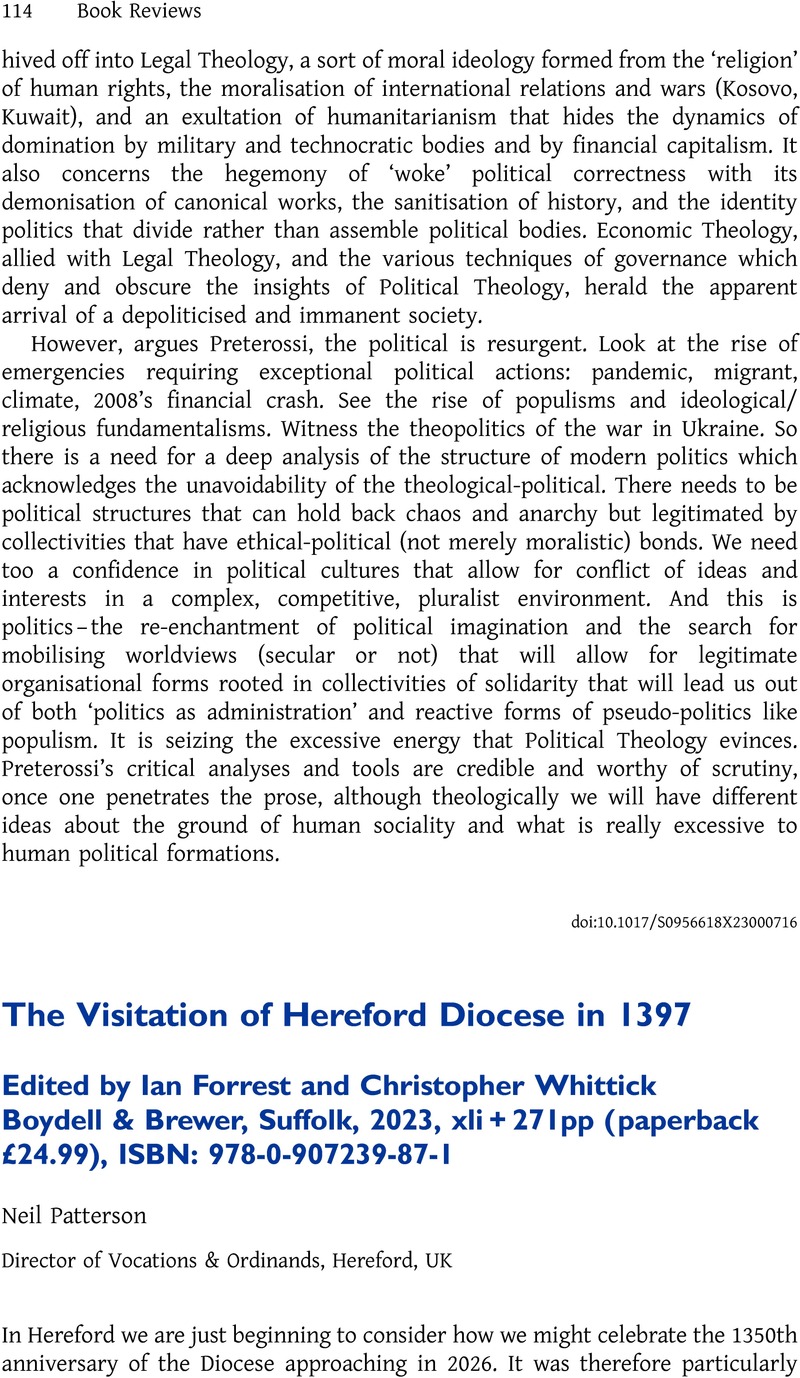No CrossRef data available.
Article contents
The Visitation of Hereford Diocese in 1397 Edited by Ian Forrest and Christopher Whittick Boydell & Brewer, Suffolk, 2023, xli + 271pp (paperback £24.99), ISBN: 978-0-907239-87-1
Review products
The Visitation of Hereford Diocese in 1397 Edited by Ian Forrest and Christopher Whittick Boydell & Brewer, Suffolk, 2023, xli + 271pp (paperback £24.99), ISBN: 978-0-907239-87-1
Published online by Cambridge University Press: 18 January 2024
Abstract
An abstract is not available for this content so a preview has been provided. Please use the Get access link above for information on how to access this content.

- Type
- Book Review
- Information
- Copyright
- Copyright © Ecclesiastical Law Society 2024



